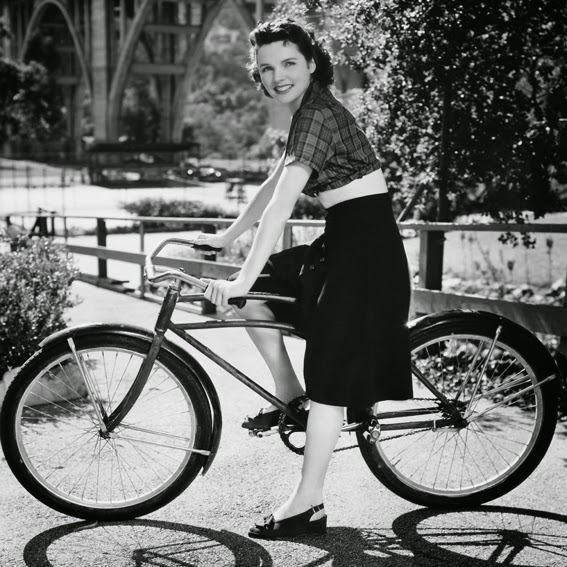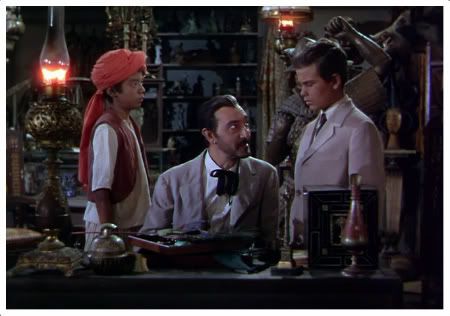For this edition of TV/Movie sets we will be looking at the beautiful home of Dr. John Dolittle, known to his friends simply as Doctor Dolittle or "that maahvelous man". Rex Harrison was the titular star in the extravagant 1967 musical based on the children's classic by Hugh Dowling. Dolittle was one of the very first veterinarians, an animal doctor who was not only sympathetic to animals, but understood them as well. Literally. Polynesia, Dolittle's pet parrot, taught him how to speak 499 animal languages....just a drop in the bucket to the nearly 2,000 languages that Polynesia spoke herself.
Doctor Dolittle is a wonderful film, very entertaining and very underrated. It's a simple story about the doctor trekking off in quest of the Giant Pink Sea Snail...after he deals with a number of smaller tasks at home. Anthony Newley portrays Dolittle's friend, Matthew, who decides to join Dolittle on his quest along with his little pal Tommy ( William Dix ). Samantha Eggar tags along as well, not having anything better to do.
When Doctor Dolittle was released it was not a smash hit. In fact, it was a downright flop, retrieving only half of its $18 million dollar budget in ticket sales. Children were not interested in listening to Rex Harrison "sing" through seven different songs, and its 152 minute run-time, crawling along at a snails pace, was much too long for children to sit through. But, from an adult perspective, it is quite entertaining and, above all, it exudes the most happifying mood. This is a great deal due to the beautiful cinematography, sumptuous costumes, and most importantly - the sets.
While all the sets are beautiful in the film, for this post we will be looking at one in particular - the home of Doctor Dolittle. This animal lover lives in the small village of Puddleby-on-the-Marsh, in a stone cottage near the outskirts of town. While practicing as a medical doctor he resided here with his sister, Sarah, but after she discovered pigeons in the linen closet, snakes in the drawer, and mice in the cupboards, she huffed out of the place.
Dolittle is quite at home living with the animals and never complains about it, unless they decide to snitch his breakfast. When Tommy Stubbins first meets the doctor, he is trying to communicate with a flock of goldfish. The next day, he gets to see the doctor in action and assist him when his patients come streaming in...
Italian art director Mario Chiari was put in charge of the production design of Doctor Dolittle, and it was this man who supervised the design and construction of all of the sets featured in the film. Prior to Doctor Dolittle, he had worked on only a few films as a production designer. Chiari wore many hats, including that of a writer, costume designer, director, assistant director, set decorator, and art director.
Doctor Dolittle was the most important motion picture that he worked on during the 1960s and was undoubtedly the best of his career. Working closely with him were art directors Ed Graves and Jack Martin Smith who had designed the sets for Our Man Flint, Von Ryan's Express, Meet Me in St. Louis, The Valley of the Kings,The Best of Everything, Cleopatra, and Tora Tora Tora!, to name a few.
Stuart Reiss was an excellent set decorator and had worked with Jack Martin Smith on The Best of Everything, The Second Time Around, Mr. Hobbs Takes a Vacation, Five Weeks in a Balloon, What a Way to Go!, Fantastic Voyage and many other films.
Dolittle's house appears to be built on a sloping hill with the living room being the lowest level in the house. From the wide and inviting entryway a visitor would make a left turn and take six steps down to get into the living room, which is a very bright and cheerful open space. French doors lead out to a stone terrace which also acts as an exit door for Dolittle's four-legged patients.
The stairway in the photo above leads to upper rooms which are not shown in the film. Presumbably these rooms are occupied by Dolittle's long-term patients.
Cheetah, the chimp, doesn't have time to monkey around. She acts as the resident housekeeper and cook and prepares Dolittle's strictly vegetarian meals in the wood burning fireplace near the nook. We're sure she is a far better cook than sister Sarah. This appears to be the only "kitchen" we see in the house. In the early 19th century few houses had separate kitchens. Especially in England.
Doctor Dolittle is a wonderful film, very entertaining and very underrated. It's a simple story about the doctor trekking off in quest of the Giant Pink Sea Snail...after he deals with a number of smaller tasks at home. Anthony Newley portrays Dolittle's friend, Matthew, who decides to join Dolittle on his quest along with his little pal Tommy ( William Dix ). Samantha Eggar tags along as well, not having anything better to do.
After her abrupt dismissal, Dolittle went about making a few changes to make his cottage more comfortable..namely, cluttering the place up. Nothing like a good mess to give a home the nesting feel!
 |
| In the pre-veternarian days, Dolittle had a clean desk. |
One of these changes was making the house more accessible for his patients. The double row of stairs would never do for cows, horses and such, especially injured ones, and so, a ramp was installed leading down into the living room.
Paintings of Grecian goddesses were replaced with practical drawings of animal anatomy and bird plummage and every little empty nook and cranny was converted into a home for a stray animal. Even a ladder was built along the stair rail to assist the birds in climbing to the upper chambers.
which includes a mother fox and her cubs; and helping a clumsy mouse who continually gets his tail bent in a trap. Dolittle devised a particularly clever machine to straighten mice tails.
 |
| Look at the fabulous stationary set! |
Jack Martin Smith's work dates back to the early days of Hollywood, and it was his sketches of Emerald City that were used in the final sets for The Wizard of Oz.
 |
| The nook looking like an ark. |
What is most impressive is the sheer amount of detail that can be seen in each of the sets. The pictures on the wall, the loose feathers in the corners, the bric-a-brac of a doctor of the mid-1800s, the worn look of the furniture, etc. These small details can all be attributed to the keen and artistic eyes of the set decoraters, Stuart A. Reiss, and Walter M. Scott.
 |
| The nook before the animals moved in. |
 |
| Dolittle's Foyer |
 |
| The door to Dolittle's bedroom. The linen closet is to the left. |
At the head of the stairway situated in the living room is the bedroom where Dr. Dolittle sleeps. It is not much bigger than an attic storage room, but that has no effect on Dolittle. In this scene he is dreaming of what he could accomplish once he acquires the skill of talking with animals.
The set design for the interior of Doctor Dolittle's house is similar in style to those used for the homes of Professor Lindenbrook in Journey to the Center of the Earth ( 1959 ), and George Wells in The Time Machine ( 1960 ); each of them featuring a rustic and strongly masculine style of decoration.
The outside of Dolittle's cottage features typical Cotswold architecture, with its stone and stucco walls and fairy-tale style sloping roofs. One wonders how the grass was cut in the mid-1800s. Whatever method other people employed, Dolittle probably took a shortcut and talked some of the local cows into chewing his grass down to a manageable height.
Even though he was considered a "quack" in the village, we really envy the doctor's lifestyle and especially his home. As Mr. Blossom so aptly put it, "I've never seen anything like it in my life!".








































































































































